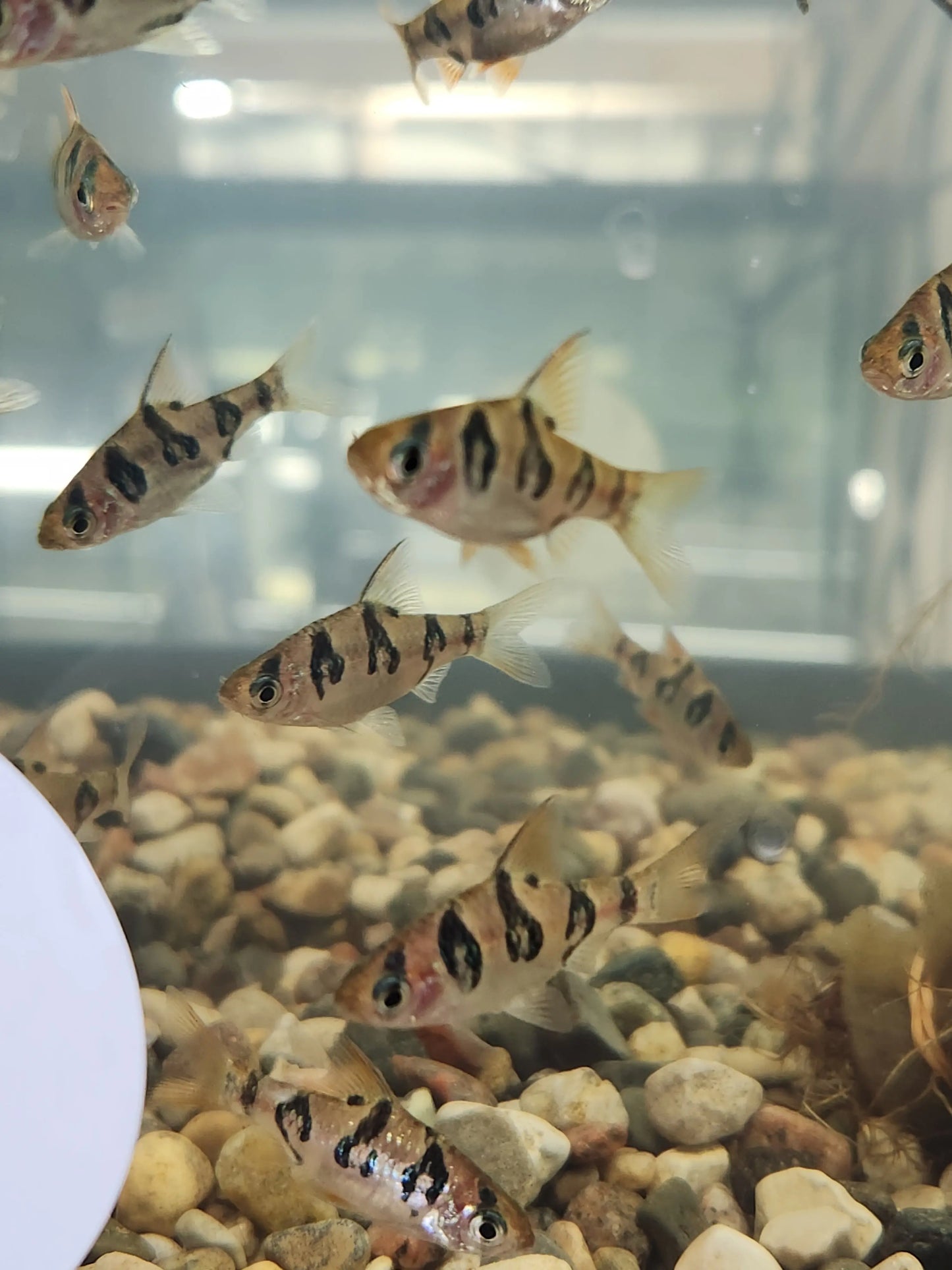Round-banded Barb – Desmopuntius johorensis (Snakeskin Barb)
Round-banded Barb – Desmopuntius johorensis (Snakeskin Barb)
Low stock: 3 left
Couldn't load pickup availability
Round-banded Barb – Desmopuntius johorensis (Snakeskin Barb)
Beautiful, active, and full of pattern, the Round-banded Barb (Desmopuntius johorensis) — also known as the Snakeskin Barb — is a striking freshwater schooling fish featuring golden bronze coloration with distinctive dark, scale-like reticulated patterns. Its shimmering body and graceful movement make it an eye-catching addition to planted or community aquariums.
Peaceful and hardy, Round-banded Barbs are excellent for community tanks with other mid-sized, non-aggressive fish. They thrive in clean, well-oxygenated water and enjoy swimming in groups where their natural schooling behavior truly shines.
Features:
- 🐟 Scientific Name: Desmopuntius johorensis
- 🌍 Origin: Borneo, Malaysia, and Sumatra
- 🌈 Coloration: Gold-bronze body with dark snakeskin-like bands
- 💧 Temperament: Peaceful schooling fish
- 🍽️ Diet: Omnivore – eats flakes, pellets, and frozen or live foods
- 🪸 Tank Level: Mid to bottom
Recommended Tank Parameters:
- Temperature: 74–80°F
- pH: 6.0–7.5
- KH: 3–10 dKH
- Minimum Tank Size: 30 gallons
- Environment: Planted aquarium with driftwood and swimming space
Behavior & Compatibility:
Keep in groups of 6 or more to promote natural schooling and reduce shyness. Compatible with tetras, rasboras, Corydoras, rainbowfish, and peaceful gouramis. Avoid fin-nipping or highly aggressive species.
Frequently Asked Questions (FAQ)
Q: How big do Round-banded Barbs get?
A: They reach about 3 inches (7–8 cm) as adults.
Q: Are Snakeskin Barbs peaceful?
A: Yes — they’re peaceful schooling fish, great for planted and community tanks.
Q: Can I keep them with tetras or rasboras?
A: Absolutely! They mix well with other mid-sized peaceful fish species.
Q: What do they eat?
A: They’ll accept flakes, pellets, and frozen or live foods such as daphnia, bloodworms, or brine shrimp.
Q: Do they need to be kept in groups?
A: Yes — keeping at least 6 together helps reduce stress and encourages natural schooling behavior.

